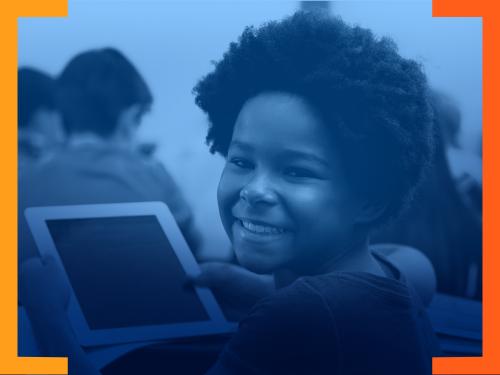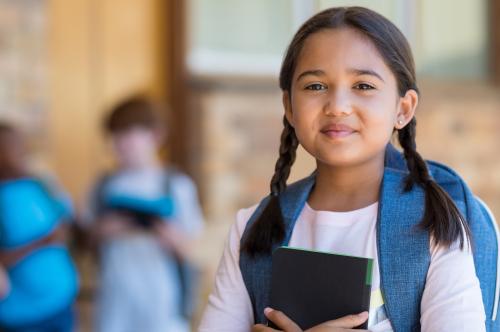Last July, the U.N. secretary-general called for a focus on delivering more global public goods. Yet, 15 years after the International Task Force on Global Public Goods wrote its summary report, much work remains to shape debate and action in the education sector on this. Is education so heterogenous that each government must develop bespoke solutions? Or could some standards and systems be created globally and tailored for national and local implementation?
In 2016, the Education Commission found that only 3 percent of overseas development assistance for education was being spent on global public goods, compared with a full fifth in the health sector.
And yet the case for investment is strong. The global learning crisis is severe and expensive, and COVID-19 has exacerbated existing issues. Last year we estimated global losses in students’ future earnings as a result of school closures, finding they will impact those most in low-income countries. The World Bank has predicted a triple funding shock for investment in the sector as a result of the pandemic. Many school systems, particularly those in settings with limited connectivity and access to data and devices, have struggled to harness basic tech effectively in the last year. And the most vulnerable students, even in high-income countries, are least likely to benefit from online learning when they do have access to it.
We also know the sector can work toward meeting common global goals. For example, concerted government and NGO efforts for girls’ education has led to steady (if uneven) progress toward gender parity. Global and regional standards and assessment systems are increasingly strengthening our collective understanding of what learning looks like. And global research programs and groups like the Global Education Evidence Advisory Panel are now emerging with a focus on global public goods. Last year the Save Our Future Coalition explicitly called for donors to invest in public goods that can support and leverage reforms at the country level.
Current lack of investment—and the need to work collectively in the wake of a seismic shock for education—has inspired us to consider what a common agenda for global public goods in education might look like. We offer three foundational principles and a set of possible actions as a starting point for international education institutions, multilateral and bilateral donors, foundations, and corporations with global reach—all of whom should see this as part of their core business:
1. Put children, parents, and the education workforce at the center. Learning is about people, not institutions. Global public goods will have most impact when they put children at the center of an ecosystem of learning opportunities.
Making the shift from talking about the right to education, coined over 70 years ago, to the right to learn will help us focus on what matters most. We could put children at the center by creating unique learner identities (that they can access), allowing us to create personal learning records. Access to open-source tools—harnessing technology increasingly to personalize these—could transform foundational literacy and numeracy levels, as well as deliver stronger, better tailored teacher professional development. And a global qualification or standard could be used to recognize and celebrate excellence in novice teachers.
2. Provide digital platforms for education systems. While global businesses rely on an ecosystem of digital platforms to run increasingly complex supply chains (tailored but seldom developed in-house), education systems are still largely built from scratch. Open-source digital platforms could help countries strengthen governance, cut waste, improve interoperability, and drive up standards.
Actions in this area might include access to an open-source information management system that meets a global benchmark for providing the data needed to make evidence-based decisions. Meanwhile, a shared global standard to assess whether children are learning foundational skills would help systems target children at risk of being left behind with specialized interventions. And teachers will continue to need quality-assured lesson plans, instructional materials, coaching, and other support to help them.
3. Create a new compact with technology companies. The sector has profited significantly during the pandemic and played an increasingly important role in the provision of education. But companies’ support for learning can be piecemeal and seldom benefits the children who need it most. A global ed-tech compact could increase basic connectivity, drive up standards, and plow a share of private revenues into children’s learning.
Any such compact should include investment in universal connectivity, given the sector’s responsibility under the “Contract for the Web.” In the short term, the private sector should commit to working with governments to connect every school to the internet. At the same time, it will be important to create quality assurance for the growing number of platforms that offer search and distribution of digital educational resources.
Finally, we call for the establishment of a global ed-tech fund, with Gavi as its inspiration. By investing in a model, technology companies could help transform access to quality tech-enabled learning for children who would otherwise be excluded. At the same time, the sector would be involved in shaping markets so that they work for the people who need them the most.
We offer these ideas to set out a possible common agenda for global public goods in education. As the U.N. secretary-general prepares to launch his priorities for a second term of office, we call on the education and technology sectors in particular to work closely together to shape, invest in, and deliver to the benefit of learners worldwide.
The Brookings Institution is committed to quality, independence, and impact.
We are supported by a diverse array of funders. In line with our values and policies, each Brookings publication represents the sole views of its author(s).









Commentary
What does a common agenda for global public goods in education look like?
June 21, 2021